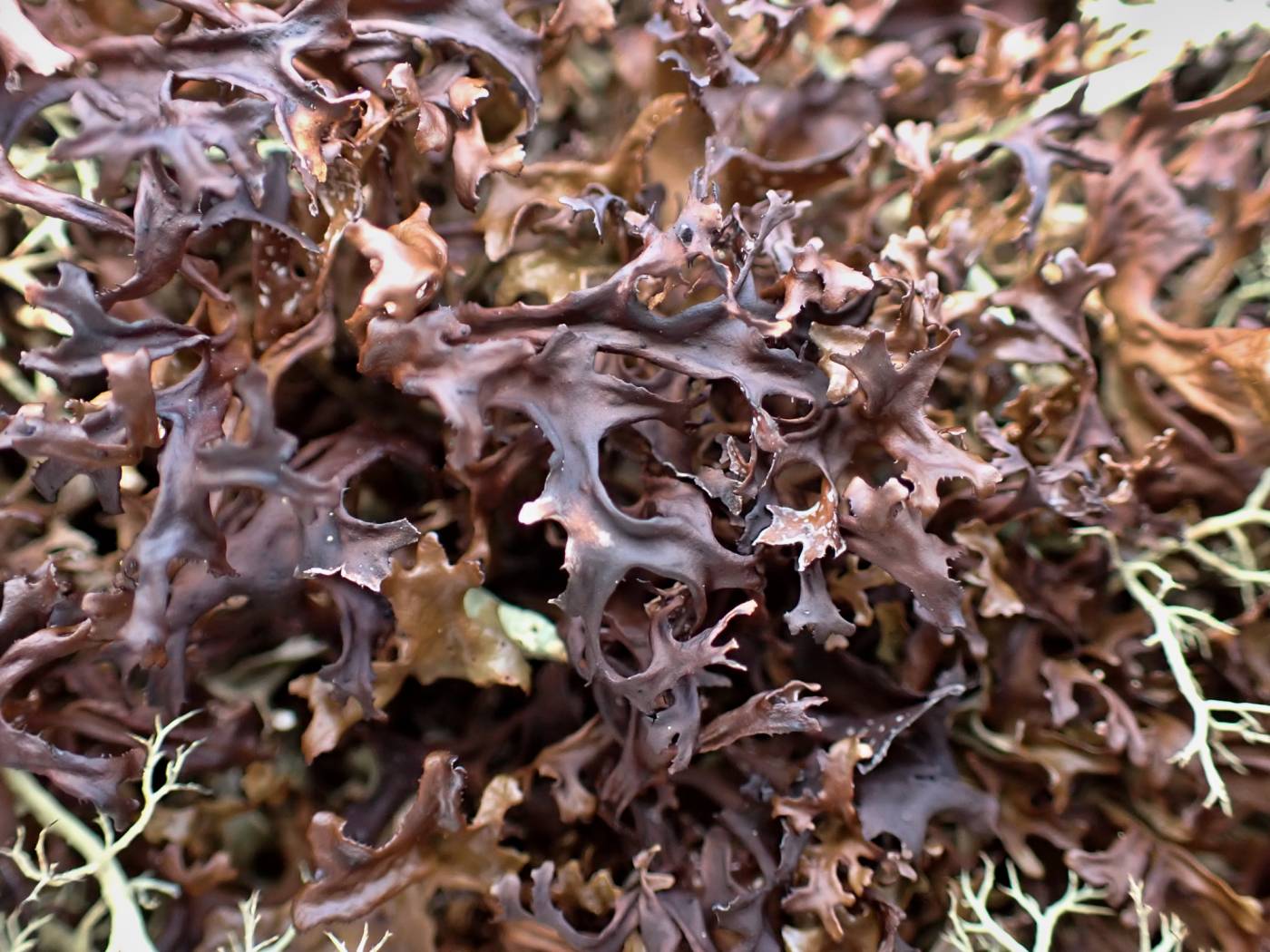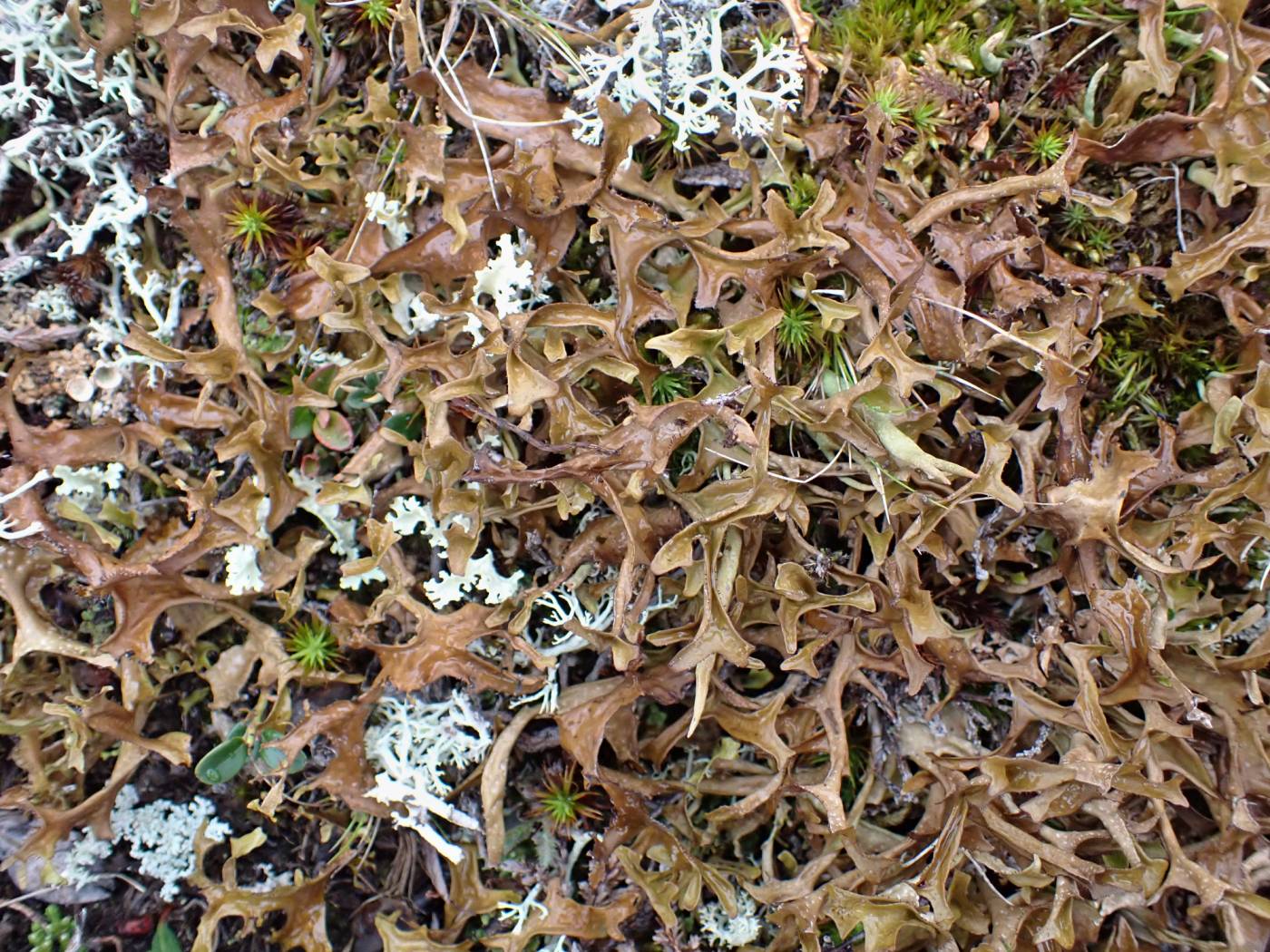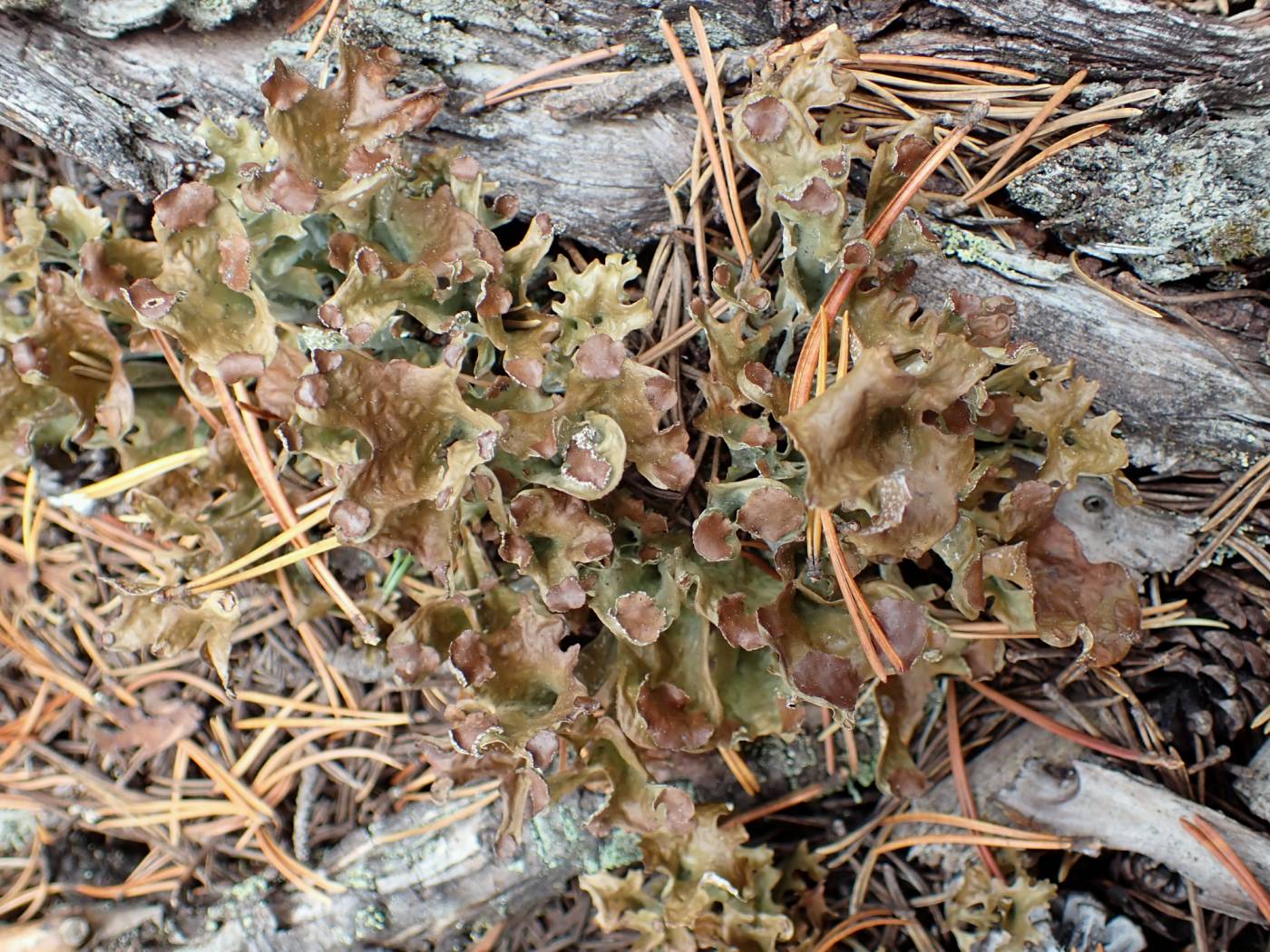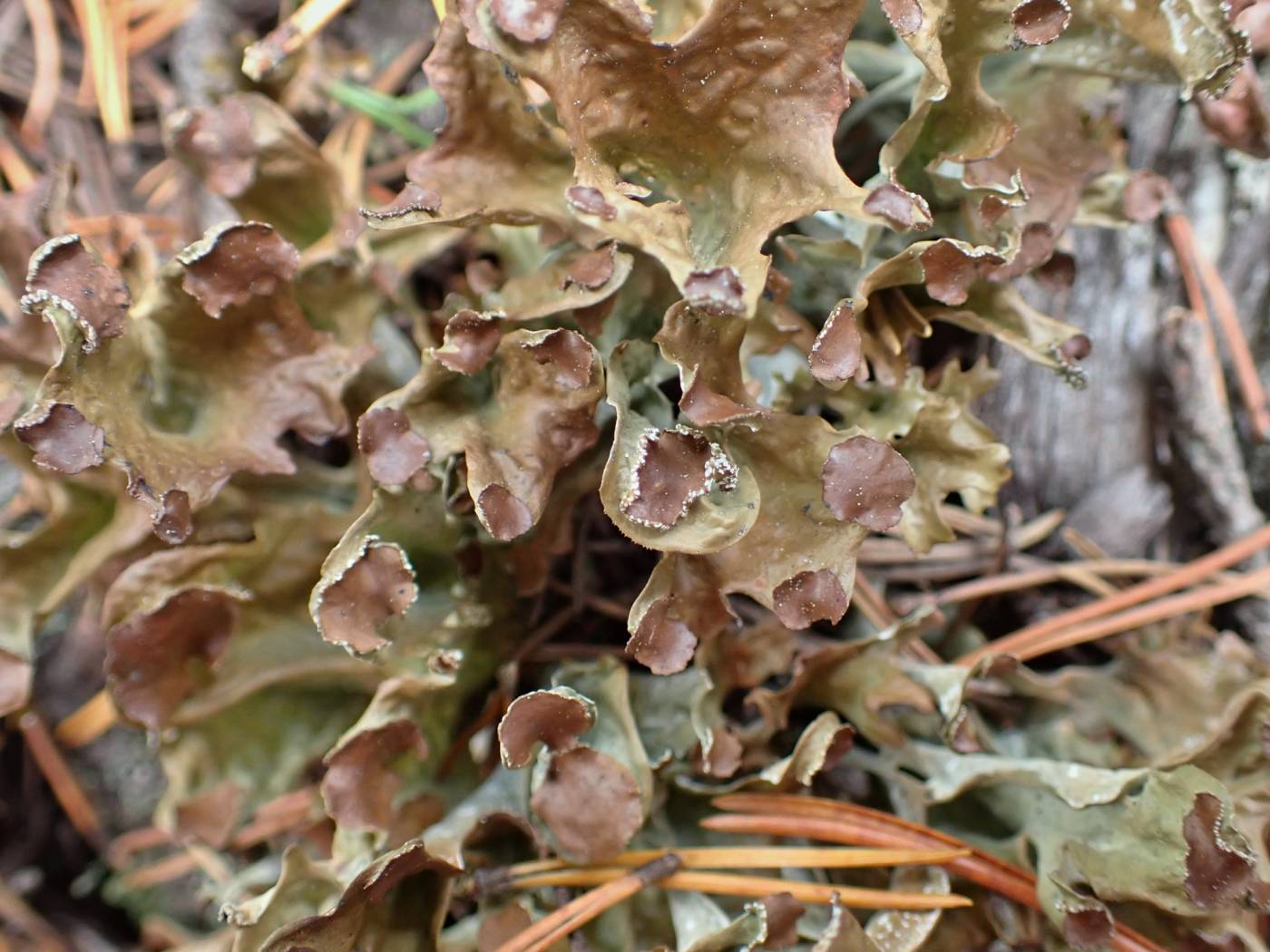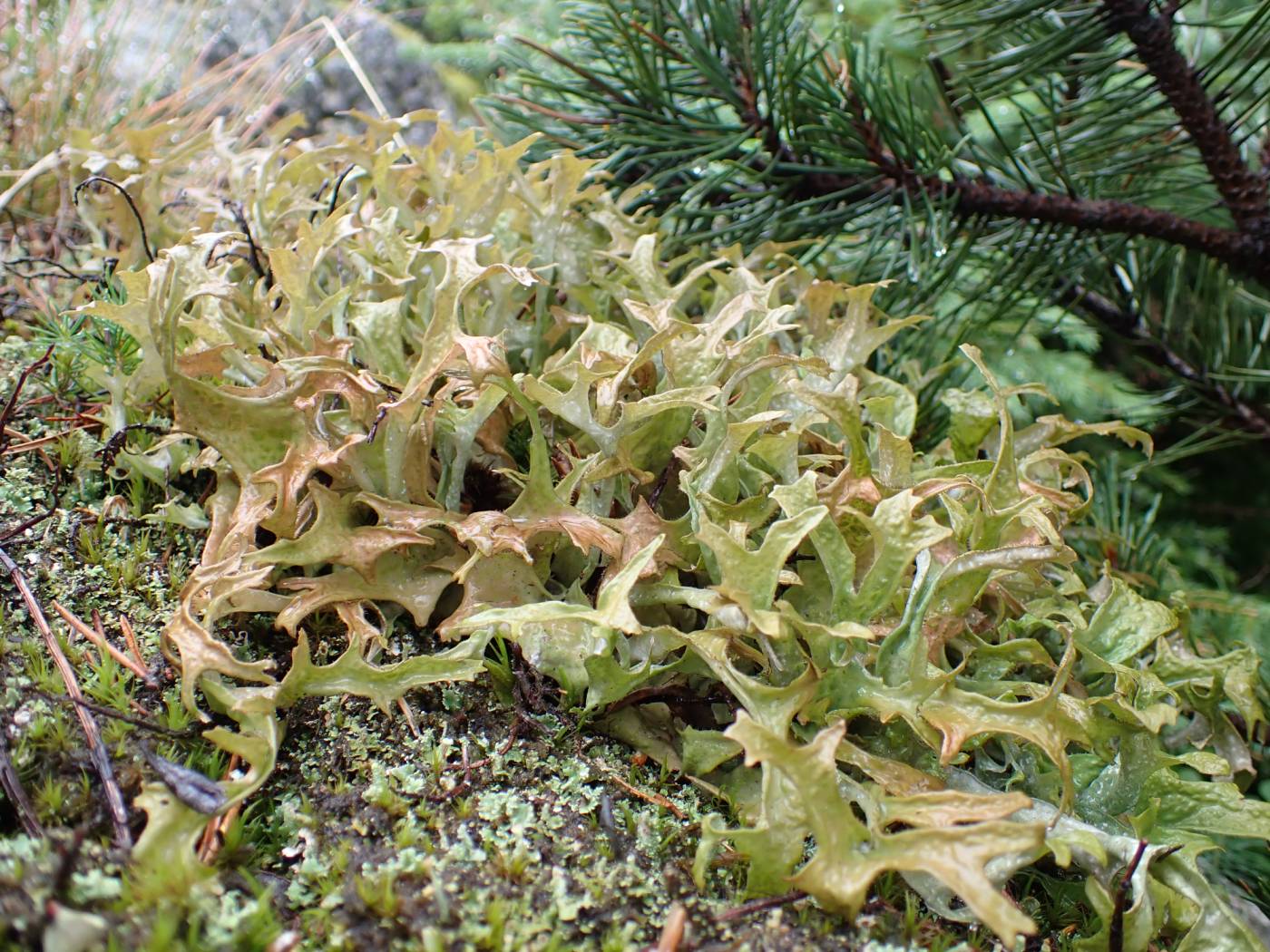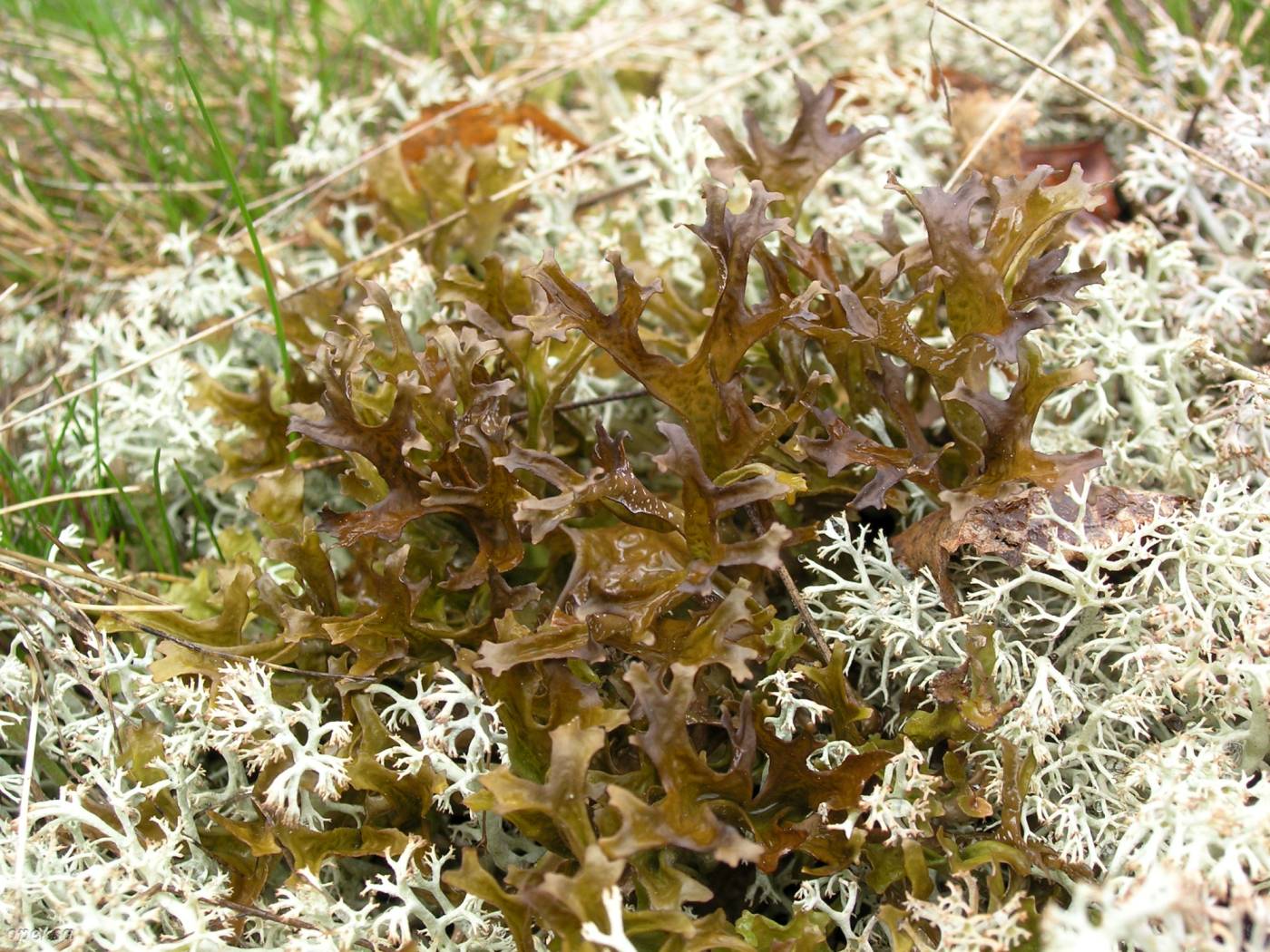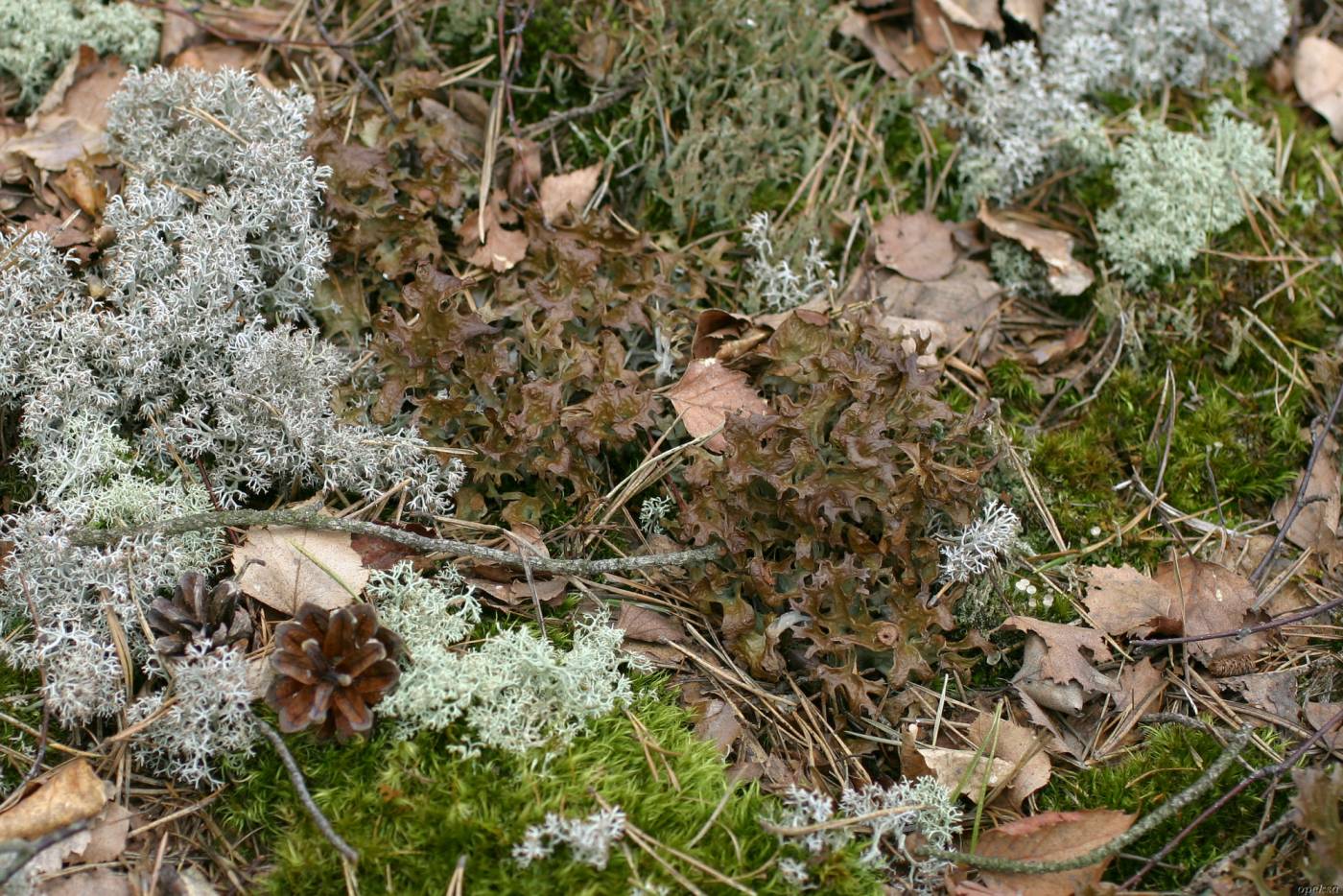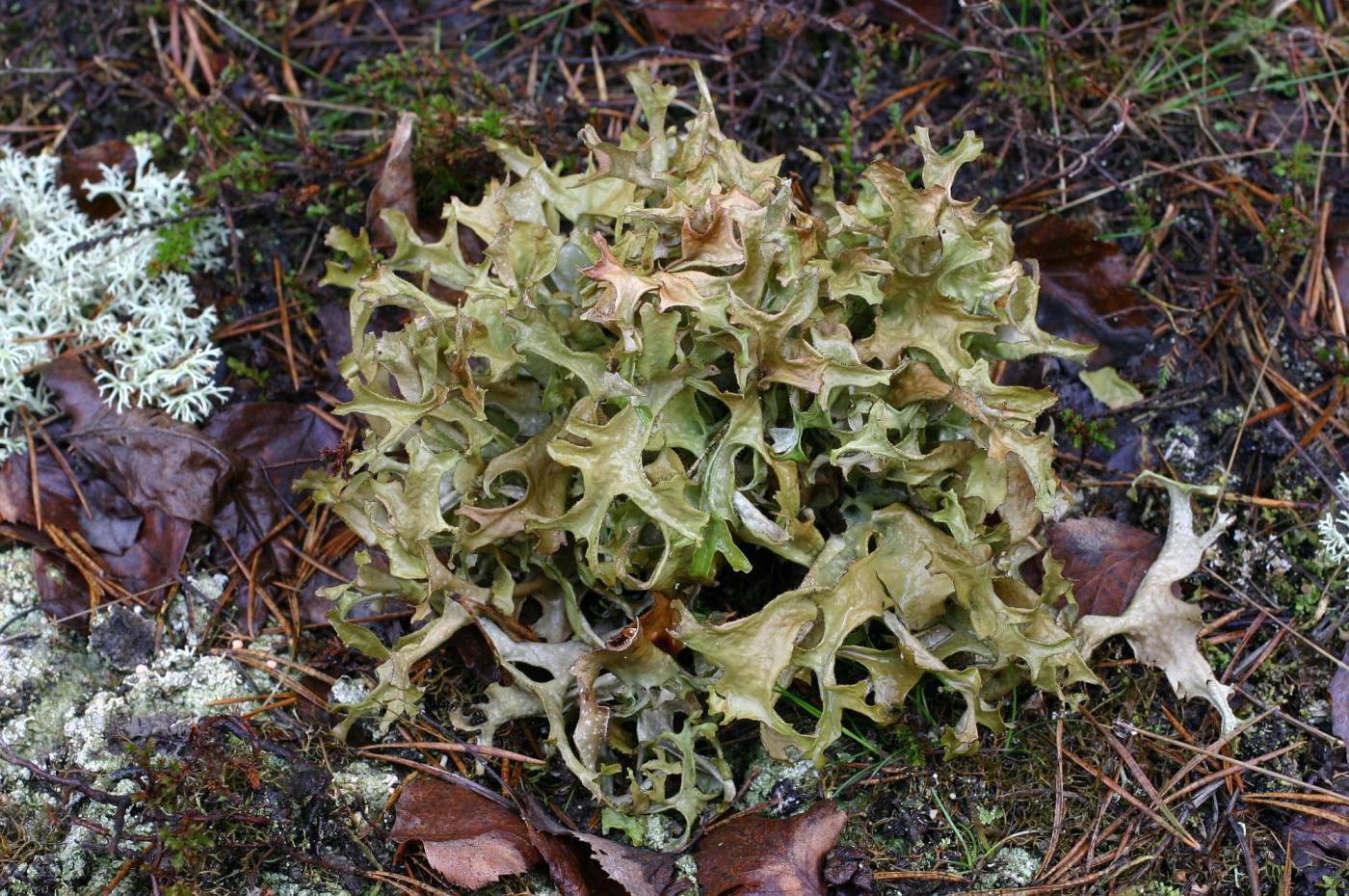One of the most famous lichens, known also as the Iceland moss. It grows mainly on acidic substrates, such as soil and humus in grasslands, heathlands, open coniferous (especially pine) forests and peat bogs. Cetraria islandica is distributed sparsely throughout the Czech Republic, from lowlands to mountains where it is a way more common. It is a cosmopolitan species, morphologically very variable. Currently, several subspecies are recognised.
Cetraria islandica was introduced to European pharmaceutics by the 1600s together with other lichens, but as the only one remained till now. It has traditionally been used, most often as a decoction or infusion, to cure digestive and respiratory issues (such as asthma, but also tuberculosis), in some regions even for diabetes or tumours (Crawford 2015). The thallus contains a large quantity of polysaccharides, particularly lichenin and isolichenin and many active acids, such as protolichesterinic acid and lichesterinic acid (influencing among other also skin pigmentation), protocetraric acid, fumarprotocetraric acid (Xu et al. 2016). Recent studies confirmed its antioxidant, anti-inflammatory and anticancer actions (e.g. Grujičić et al. 2014). Therefore, it is not a surprise that nowadays it is commercially sold in various forms (dry, in powder, in pills or syrups) for purposes of human and veterinary medicine worldwide. In the past, this species was a crucial ingredient in Icelandic cuisine and is still regularly added in bread or eaten as a traditional milk soup (Svanberg & Egisson 2012).
Literature: Crawford S.D. (2015): Lichens Used in Traditional Medicine. In: Ranković B. [ed.], Lichen Secondary Metabolites. – Springer, Cham. Grujičić D., Stošić I., Kosanić M., Stanojković T., Ranković B., & Milošević-Djordjević O. (2014): Evaluation of in vitro antioxidant, antimicrobial, genotoxic and anticancer activities of lichen Cetraria islandica. – Cytotechnology 66: 803–813. Svanberg I. & Egisson S. (2012): Edible wild plant use in the Faroe Islands and Iceland. – Acta Societatis Botanicorum Poloniae 81: 233–238. Xu M., Heidmarsson S., Olafsdottir E. S., Buonfiglio R., Kogej T. & Omarsdottir S. (2016): Secondary metabolites from cetrarioid lichens: Chemotaxonomy, biological activities and pharmaceutical potential. – Phytomedicine 23: 441–459.
taxonomic classification:Ascomycota → Lecanoromycetes → Lecanorales → Parmeliaceae → Cetraria
Red List (Liška & Palice 2010):NT – near threatened
Occurrence in the Czech Republic
All records: 2426, confirmed 340. One click on a selected square displays particular record(s), including their source(s).

